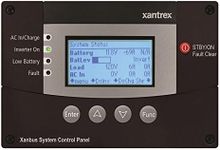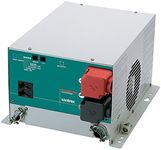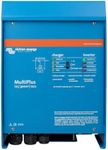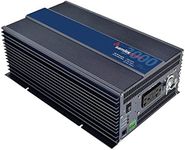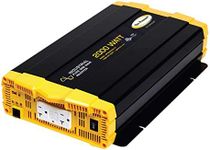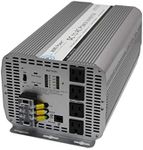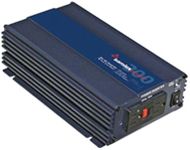Buying Guide for the Best Rv Inverters
Choosing the right RV inverter is essential for anyone who wants to enjoy the comforts of home while on the road. An inverter converts the DC power from your RV’s batteries into AC power, which is what most household appliances use. The right inverter ensures your devices run smoothly and safely, so understanding the key specifications will help you match your needs with the right product.Power Output (Wattage)Power output, measured in watts, tells you how much electrical load the inverter can handle at once. This is important because it determines how many and what kind of devices you can run simultaneously. Inverters come in different wattage ranges: small inverters (up to 1000W) are good for charging phones, laptops, or running small appliances; mid-range inverters (1000W-2000W) can handle things like microwaves or coffee makers; high-power inverters (2000W and above) are needed for running multiple large appliances at the same time. To pick the right wattage, add up the wattage of all the devices you want to use at once and choose an inverter that can handle a bit more than that total.
Pure Sine Wave vs. Modified Sine WaveThis spec refers to the type of electrical signal the inverter produces. Pure sine wave inverters create a smooth, clean power similar to what you get at home, which is important for sensitive electronics like laptops, TVs, and medical devices. Modified sine wave inverters are less expensive and work fine for simple devices like lights or fans, but they can cause issues or noise with more sensitive equipment. If you plan to use electronics that are sensitive or require stable power, go for a pure sine wave inverter. For basic needs, a modified sine wave inverter may be enough.
Input VoltageInput voltage is the type of battery system your RV uses, usually 12V or 24V. This is important because the inverter must match your RV’s battery voltage to work properly. Most RVs use 12V systems, but some larger setups use 24V. Always check your RV’s battery voltage and choose an inverter that matches it to ensure compatibility and safety.
Continuous vs. Peak PowerContinuous power is the amount of power the inverter can supply for an extended period, while peak (or surge) power is the higher amount it can provide for a short burst, like when starting a motor. This matters because some appliances, like refrigerators or power tools, need extra power to start up. When choosing an inverter, make sure its continuous rating covers your regular needs, and its peak rating can handle the startup demands of your largest device.
Number and Type of OutletsThis refers to how many devices you can plug in at once and what kind of outlets are available (standard AC, USB, etc.). More outlets mean more flexibility, but you should also check if the outlets match the plugs of your devices. If you have several devices to power at the same time, look for an inverter with enough outlets and the right types for your needs.
Safety FeaturesSafety features like overload protection, short-circuit protection, and low-voltage shutdown help protect both your devices and the inverter itself. These features are important because they prevent damage from electrical faults or battery issues. Look for inverters with built-in safety protections, especially if you plan to leave the inverter running unattended or use it with valuable electronics.
Size and InstallationThe physical size and installation requirements of the inverter matter because space in an RV is limited. Some inverters are compact and easy to install, while others are larger and may need professional installation. Consider where you’ll place the inverter and whether you’re comfortable installing it yourself or will need help. Choose a size and installation method that fits your RV’s layout and your own skills.

